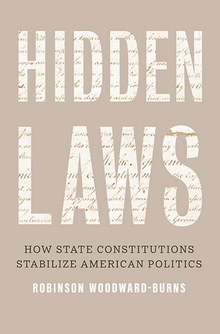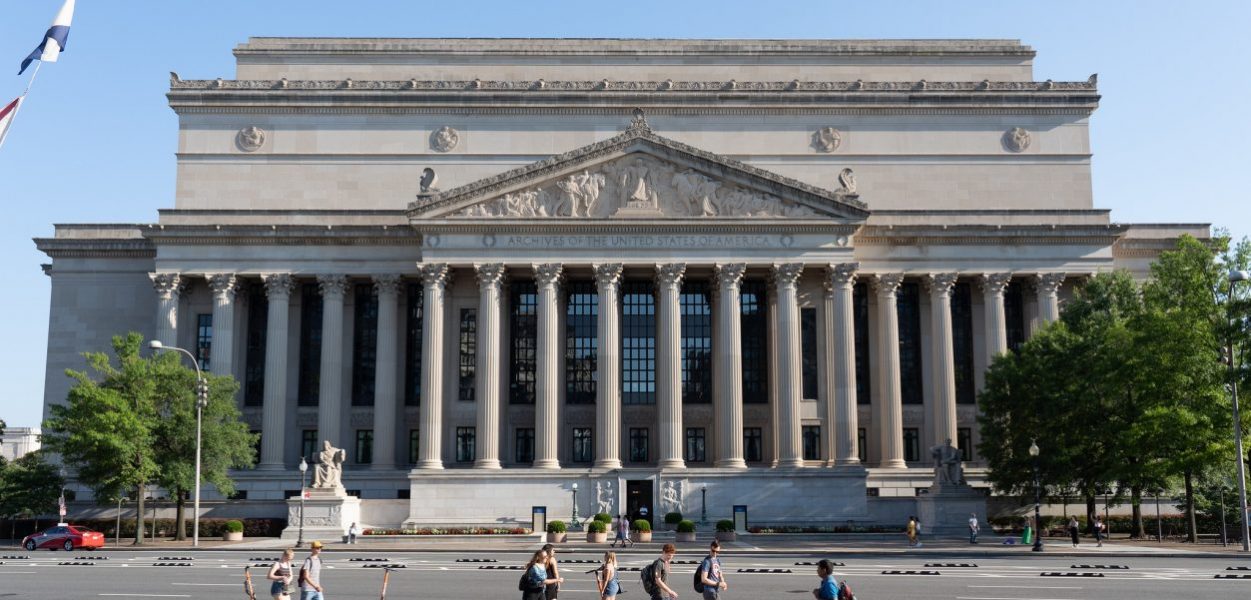Constitutional Reform
Robinson Woodward-Burns—
The federal framers signed the Constitution in Philadelphia on September 17, 1787. The following July 4, Philadelphians celebrated the Constitution’s ratification with a mile-long “Grand Federal Procession,” led by a six-horse coach ornamented by a thirteen-foot gilded copy of the Constitution held by an eagle bearing the phrase “THE PEOPLE.” Boston, Baltimore, Charleston, and New York hosted similar parades. A schoolbook printed eight years later declared the Constitution “the greatest by far that any people ever had; and it can scarcely be expected that any ever should be greater.” That same year—1796—the original Constitution was placed under the care of Secretary of State Thomas Jefferson and then deposited in Treasury Department storerooms. On the eve of British occupation of Washington in August 1814, three government clerks spirited the Constitution in a linen sack across the Potomac to a Virginia gristmill. It later was returned to a Treasury Department archive, then placed in the Washington Orphan Asylum, and finally in a secured State Department storage basement. After a transfer to a Library of Congress cellar in 1921 and to Fort Knox during the Second World War, the document was brought back to Washington, DC, sealed in a bulletproof case, and escorted down Pennsylvania Avenue by two tanks and a detachment of four servicemen bearing submachine guns. The Constitution was interred in the vast, dim rotunda of the National Archives Building, flanked by the Declaration of Independence and Bill of Rights, where it has since remained under armed guard in a bomb-proof vault that nightly descends into the floor.
The Constitution is nearly untouchable. For nearly two and a half centuries, Americans have avoided amending or fundamentally reinterpreting the Constitution. Scholars attribute the Constitution’s stability to Article V, to the rarity of national partisan and legislative realignment, to Supreme Court gradualism, and to popular veneration. These accounts focus mainly or exclusively on national political institutions, often ignoring the hundreds of state constitutions and thousands of state amendments.
I argue that through conflict decentralization, state constitutional reform guides and stabilizes national political development. Specifically, reformers thwarted by Article V or entrenched federal judges may instead attempt state constitutional revision. Regular, ongoing state constitutional reform resolves national controversies, deterring radical federal amendment and judicial review. State constitutional instability secures federal stability.
I suggest that conflict decentralization can take several paths. Congressional party development follows punctuated equilibrium, with extended periods of party parity in Congress discouraging Article V amendment. Long stretches of congressional parity and federal court gradualism affect state constitutionalism in a few ways. Congressional or federal judicial debate, if followed by inaction, can channel reformers to the states, a case of deference, in which constitutional reform occurs only at the state level. State debate and experimentation can yield convergence, elevating a constitutional issue to the federal level, allowing federal imitation by amendment, statute, or court ruling. States may also obviate federal reform entirely, precluding federal reform debates or, if federal debate occurs, circumventing federal actors to unilaterally address national concerns. Cases of preclusion are akin to the dog that did not bark, revealing in state constitutional debates those nationally salient issues largely absent in congressional and federal judicial records and therefore often ignored. Importantly, in each of these cases—deference, convergence, preclusion, and circumvention—active state constitutionalism resolves national issues for federal actors. Not all cases follow this pattern. Deference also allows divergence, conflict, and dysfunction in state constitutionalism, requiring federal intervention. Similarly, federal debate may incite active dictation of state policy. And federal actors may frame some national constitutional issues in ways that entirely preempt state intervention. But even in these cases, state constitutional reform shapes the choices of federal actors.
Conflict decentralization follows different paths in different eras. Since the power and cohesiveness of national party coalitions vary over time, so too do patterns of conflict decentralization. National party parity and gridlock encourage federal deference to the states, state experimentation, and convergence and federal imitation of state policy, while periods of one-party dominance allow federal dictation and intervention against divergent state policy. Since these coalition conditions vary cyclically, we similarly see long periods of passive federal deference and convergence give way to moments of active federal dictation and intervention against state constitutionalism.
From Hidden Laws by Robinson Woodward-Burns. Published by Yale University Press in 2021. Reproduced with permission.
Robinson Woodward-Burns is assistant professor of political science at Howard University.
Further Reading:



























